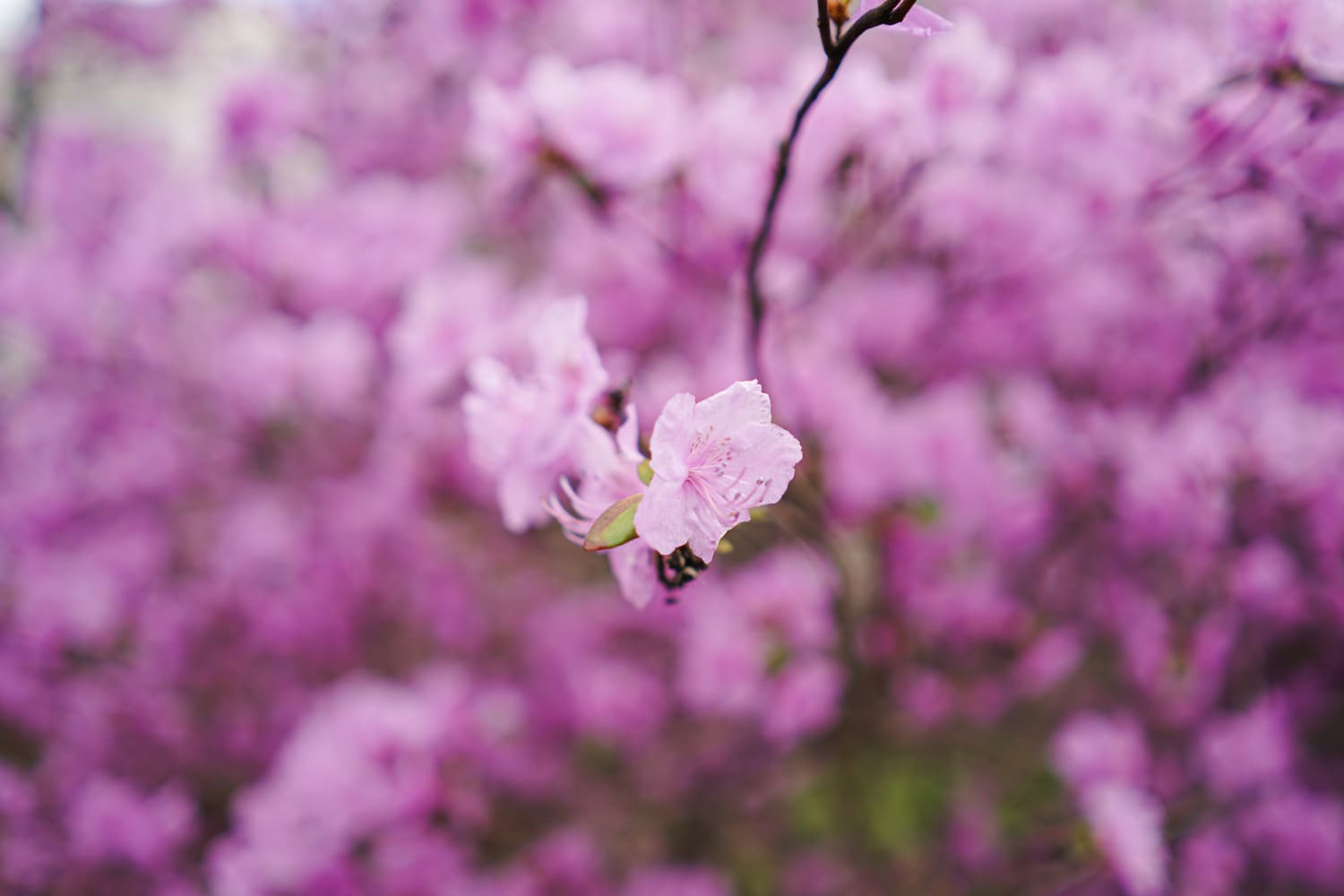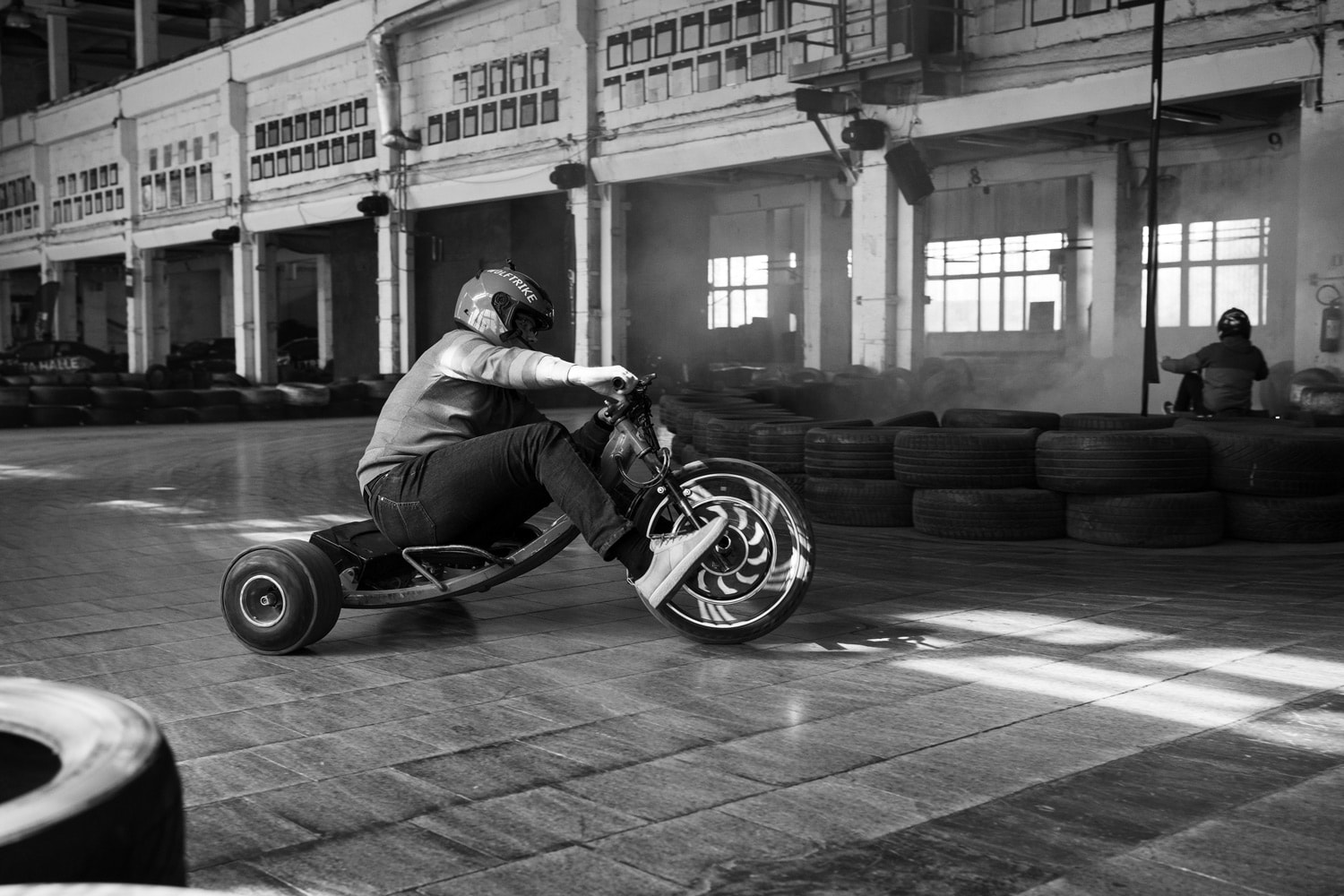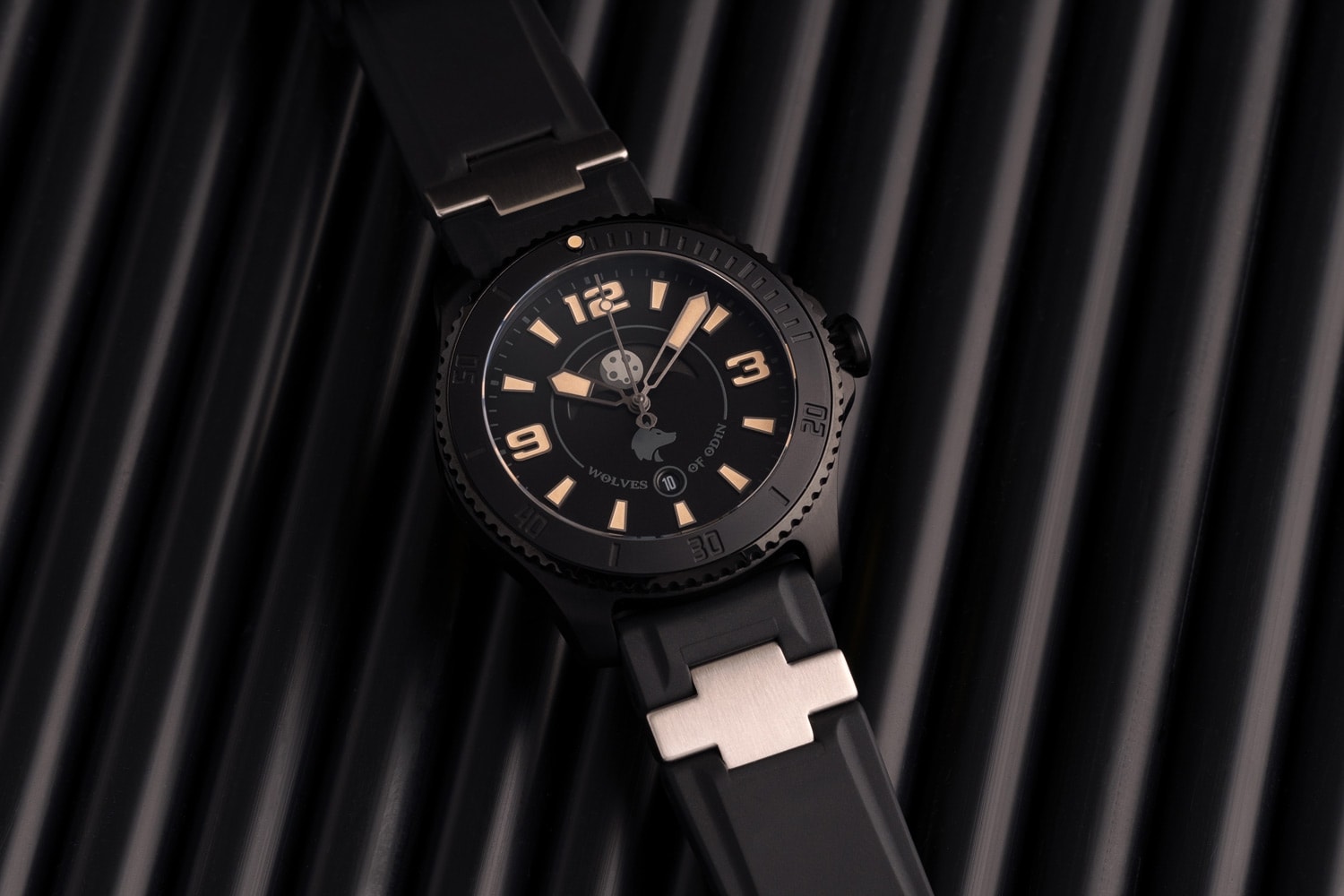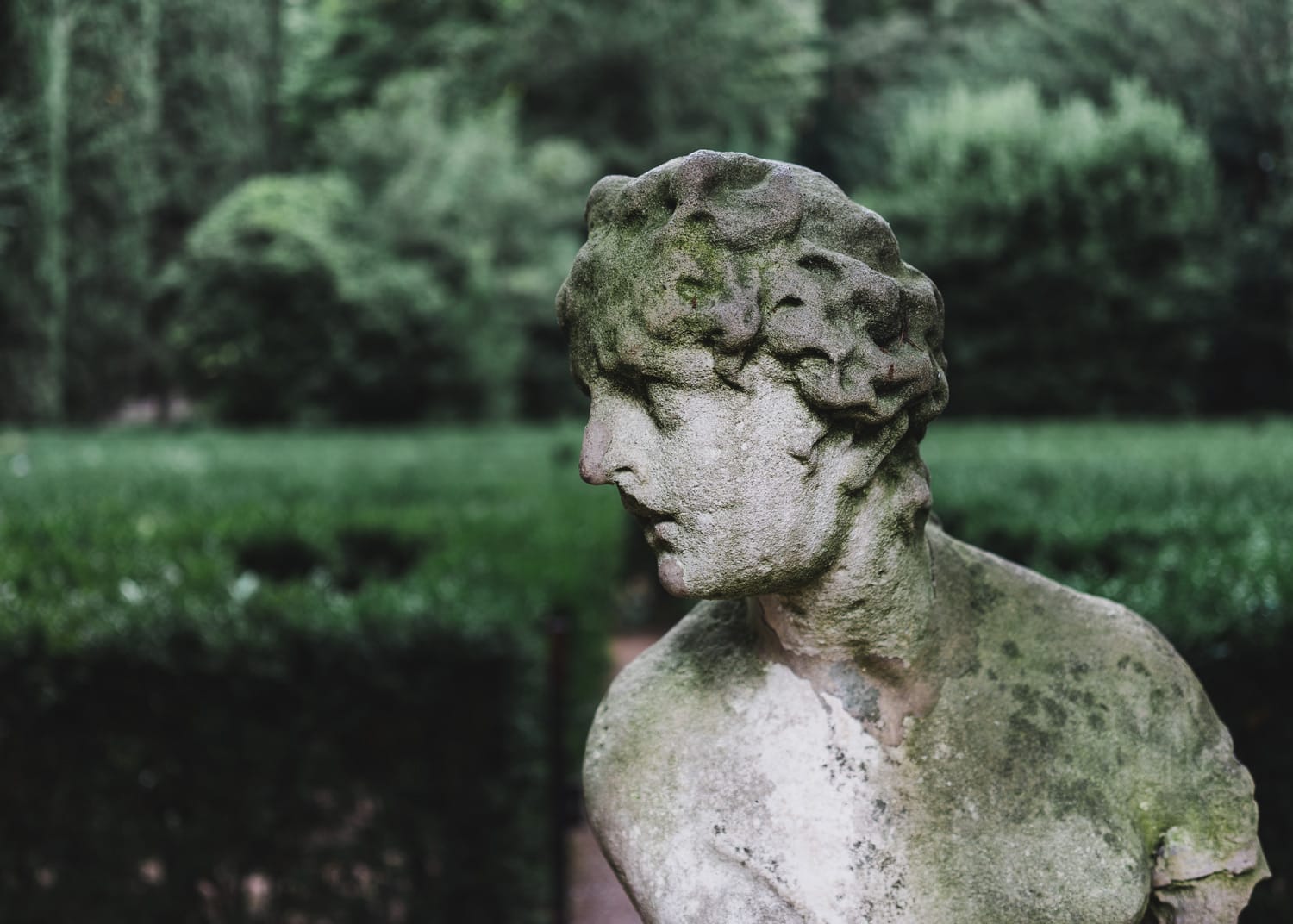In my opinion, depth of field is one of the most fundamental aspects to master in photography. It controls how much of your image is in sharp focus, from front to back.
DoF can be shallow (with only a small part of the image in sharp focus) or deep (with a large part in sharp focus). Understanding this concept is crucial in controlling how a photograph’s narrative unfolds.
Depth of Field (DoF) Definition in Photography
Depth of field (DoF) in photography refers to the area in a photo that appears sharp and in focus.
Imagine a photo where only the subject, like a person, is clear and sharp, while the background is blurry. That’s a shallow or narrow depth of field; only a small part of the image (near the subject) is in focus.

On the other hand, if everything from the foreground to the background is clear and sharp, like in a landscape photo, that’s a deep or wide depth of field.

Depth of field is controlled by three main factors: the aperture (size of the lens opening), the distance between the camera and the subject, and the focal length of the lens. More details on each of these three factors will be discussed later in this article.
Smaller apertures (higher f-numbers) and greater distances increase the depth of field, making more of the scene in focus.
Free Photography eBook for Beginners
Enter your email below to receive a FREE eBook filled with actionable tips guaranteed to enhance your photography skills.
Conversely, if you’re farther away or use a narrower aperture (a smaller lens opening), your sandwich is thicker – more dominoes are reasonably sharp before they start to blur.
Therefore, by juggling your camera settings and how you frame your shot, you can decide on the thickness of your clarity sandwich. You choose how much of your image is crisp and how much takes on a gentle blur.
Why Is Depth of Field Essential?
Depth of field is the power that directs the viewer’s eyes, nudging them gently toward what the photographer deemed essential.

Depth of field is to photography what grammar is to language. We need to understand DoF to harness the power of photography entirely. In professional photography, depth of field is used to breathe life into your shots, guiding your viewer’s focus and evoking emotions through photography.
How Do You Control Depth of Field?
Depth of field in photography is controlled by several factors like aperture, lens focal length, and distance to the subject.
Aperture
The aperture is the size of the opening in the lens through which light enters the camera. It’s measured in f-stops. A smaller f-number, like f/1.8, means a larger aperture (more light enters the camera), resulting in a shallower field depth.
In contrast, a larger f-number, such as f/16, indicates a smaller aperture (less light), yielding a deeper depth of field. For instance, when shooting a portrait, a photographer might use a wider aperture (smaller f-number) to keep the subject sharp while blurring the background, creating a shallow depth of field.

Conversely, in landscape photography, a narrow aperture (higher f-number) is often used to keep the foreground and background in sharp focus, creating a deeper depth of field.
Focal Length
Focal length is the distance from the camera’s lens to the image sensor when the subject is focused. Generally, the longer the focal length, the shallower the depth of field.
For example, a telephoto lens (such as a 200mm lens) will produce a much shallower depth of field than a wide-angle lens (like a 24mm lens), given the same aperture and subject distance.
PRO TIP: I recommend using a wide-angle lens with a shorter focal length for landscape photography. It will help you maintain a deeper depth of field, ensuring every detail is captured.
Camera-Subject Distance
The closer the subject is to the camera, the shallower the depth of field. If you’ve ever taken a macro shot of a flower or an insect, you’ll know that only a small portion of the image will be in sharp focus, with the rest blurred.

This is due to the very short distance between the camera and the subject, creating a shallow depth of field.
On the other hand, if you take a picture of a distant landscape, you’ll notice that most of the scene is in focus, demonstrating a deep depth of field.
Sensor Size
Cameras with larger sensors tend to have a shallower depth of field compared to cameras with smaller sensors.
For example, a full-frame DSLR camera (with a large sensor) can produce images with a shallower depth of field than a point-and-shoot camera or a smartphone (with smaller sensors), given the same focal length, aperture, and subject distance.

This is why professionals often prefer full-frame cameras for portraiture, as they can provide pleasing bokeh (the quality of the out-of-focus areas) and isolate the subject from the background more effectively.
Understanding Hyperfocal Distance
Understanding and using the hyperfocal distance is an advanced technique for maximizing your depth of field. This is the distance at which, when focused, everything from half that distance to infinity will be in acceptable focus.
I’ve found the hyperfocal distance invaluable when shooting landscapes that are completely sharp and in focus.
How do you find out this ‘hyperfocal distance’ when you’re out taking pictures?
For photographers, there’s a tool called a hyperfocal distance calculator, much like an app. PhotoPills provide one such calculator. You input your lens’ zoom level (focal length) and the size of your lens opening (aperture), and it will give you the perfect ‘hyperfocal distance.’
Another technique is, when you look through your camera, try focusing on an object about one-third of the way into your scene. But remember, this ‘tip’ works best when using a narrow aperture like f/8 or more and a wide-angle lens.
Depth of Field Photography Examples
Here are some examples that will inspire and instruct on the powerful impact of depth of field in photography:
Shallow Depth of Field Photography
You can achieve short depth of field photography or narrow depth of field photography using a wide aperture (smaller f-number, like f/1.4 or f/2.8). Here are some scenarios:
Portraits

Useful for blurring out a potentially distracting background while enhancing the subject’s features. You can make your subject pop against a creamy, blurred background with a shallow DoF.
Sports Photography

It directs the viewer’s attention toward the main star.
Recommended article: Sports Photography Techniques: Say Goodbye to Blurred Shots
Macro Photography

Where it can help isolate the subject and bring attention to the details.
Food Photography

A shallow depth of field can help highlight the texture and details of food, making the image more appealing and tasty.
Wildlife photography

It highlights the animal against its natural surroundings.
Deep Depth of Field Photography
You can achieve deep depth of field or large depth of field photography using a narrow aperture (larger f-number, like f/11 or f/16). Here are some specific situations:
Landscape Photography

When you want as much of the scene in focus as possible. This could include everything from the foreground elements to the distant horizon.
Architecture and Cityscape Photography

A deep depth of field ensures all elements of the structure or city are in sharp focus.
Group Portraits

A deep depth of field ensures everyone in the group is in focus, regardless of their position relative to the camera.
Street Photography

When you want to capture and portray the hustle and bustle and the seeming disorderliness of urban life.
Real Estate

When the goal is to put the entirety of an indoor space into the spotlight.
Exceptions From the Rule
However, there are situations where you can use a deep or a shallow depth of field in the same shooting situation. For example, you can use a shallow Dof in macro photography to isolate the subject from the background. But you can also use a deep DoF in macro photography – when working at high zoom levels but still want to maintain the whole primary subject in sharp focus.

In a traditional portrait, a shallow depth of field is typically used to separate the subject from the background, helping to draw the viewer’s focus onto the person.
But in an environmental portrait, a deeper depth of field might be used to show more of the surroundings, providing context about the subject’s life or profession.

In landscape photography, a deep depth of field is used to ensure that all elements in the frame, from the foreground to the distant horizon, are in focus.
However, you can intentionally use a shallow depth of field to highlight a particular feature in the landscape and create a unique artistic effect, such as emphasizing a lone flower in a vast field.

Sports photographers use a shallow depth of field to separate athletes from the background and freeze the fast-moving action. But when shooting a wider scene, such as an entire soccer field or basketball court with multiple players, a deeper DoF may be used to ensure all athletes are in focus.
Creative Possibilities with Depth of Field (DoF)
The true beauty of understanding DoF lies in its creative potential. A shallow DoF can bring your photos a dreamy, intimate feel, while a deep DoF often results in realistic, vibrant scenes. Don’t limit your understanding of DoF to “portrait equals shallow, landscape equals deep.” Break the rules and see what happens. You might surprise yourself!
PRO TIP: When practicing with different DoF settings, take a series of photos of the same subject, changing just one factor at a time. This will give you a clear understanding of how each component affects your final image.
Free Photography eBook for Beginners
Enter your email below to receive a FREE eBook filled with actionable tips guaranteed to enhance your photography skills.
FAQs
What Is the Best Depth of Field?
There’s no universally “best” depth of field, as it greatly depends on the photo context you’re trying to capture. Shallow depth of field photography is often used in portraits to isolate the subject from the background. This is typically achieved with larger aperture settings (lower f-stop numbers), such as f/1.4 or f/2.
On the other hand, a deep depth of field in photography is generally used in landscape shots, where you want as much of the scene in focus as possible. This requires smaller aperture settings (higher f-stop numbers), such as f/11 or f/16.
What Lens Is Best for Deep Depth of Field?
Lenses with wider angles, typically less than 35mm on a full-frame camera, are generally better for achieving a deep depth of field. These lenses inherently have a larger depth of field compared to telephoto lenses. For example, a 24mm lens at f/8 will have a larger depth of field than an 85mm lens at the same aperture.
However, remember that the lens doesn’t solely determine depth of field. It’s also affected by the distance between the camera, subject, and the aperture setting.
What Is the Human Depth of Field?
In an analogous sense to photography, the human depth of field refers to the range of distances at which the human eye can maintain a clear focus on objects. This varies among individuals and with age. The human eye can focus on things from about 25 centimeters to infinity in optimal conditions.
In practice, the human depth of field is not a fixed range and is influenced by several factors. For example, in low light, the pupil dilates, reducing the eye’s depth of field, while in bright light, the pupil contracts, increasing it. The eye also has a fantastic ability to quickly adjust focus to different distances, a process known as “accommodation.”
The concept of depth of field in photography was actually derived from the human visual system. It represents an attempt to mimic how our eyes perceive depth and focus within the limitations of camera technology.
Depth of Field in Photography: Summary
Now that we’ve seen the depth of field meaning in photography, what narrow depth of field photography is, and how wide depth of field photography looks like, remember it is not just about technical settings; it’s also a creative decision that can drastically affect the mood and composition of your photographs.
With a firm grasp of DoF (depth of field), you can add dimension, depth, and emotion to your images. So keep shooting, keep experimenting, and keep creating! When in doubt, check out our other resources here at OhMyCamera.
Related articles:

